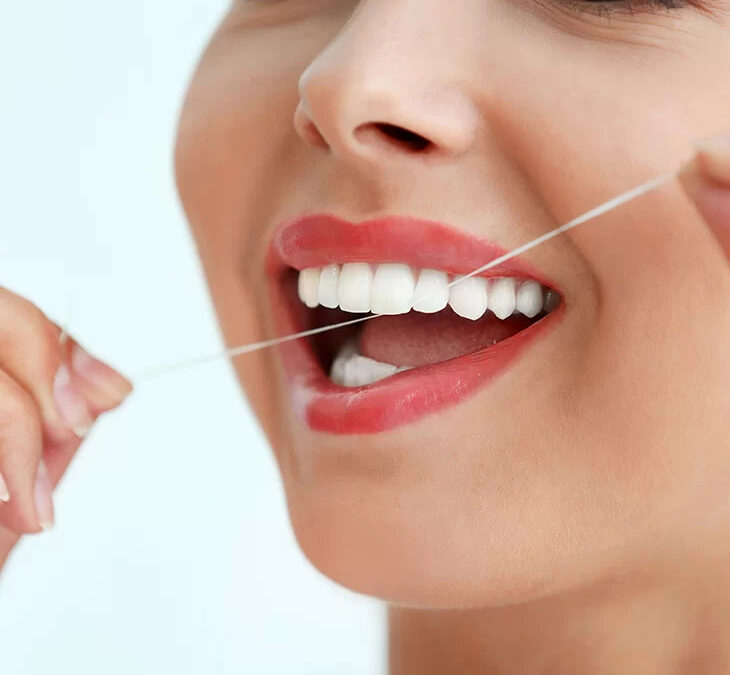Some may argue that “Flossing is just foolishness!”. But, don’t toss your floss away just yet. Even if you have heard on the news that flossing isn’t required. Simply, the scarcity of large-scale and long-term flossing investigations. Periodontitis can develop over months or even years.
However, the majority of flossing research has been conducted over very short periods. According to experts, large-scale investigations are not only costly but also difficult to carry out. These are predicated on people speaking the truth about their dental practices.
When it comes to questions concerning health practices, however, most people tend to offer what they believe to be the correct response. Some studies tend to provide weak and untrustworthy evidence. But we should know the importance of flossing and how effective it is in maintaining our oral health. According to experts, it should be done regularly, at least once a day.
But, why is it necessary to floss regularly?
Below are certain reasons why your dentist would advise you to floss regularly:
Plaque removal. Toothbrushing can help eliminate some plaque, but it cannot reach between your teeth. Flossing, in conjunction with brushing, has been demonstrated in studies to prevent gum disease more effectively than brushing itself. According to research, only 16% of people in the United States floss at least daily.
Approximately 20% of Americans floss only when something is stuck in their teeth, and 8% never floss at all. Tartar will develop if plaque is not removed by flossing and brushing. It is not removed with toothbrushing. It could only be removed by a thorough cleaning by dentists or a dental professional.
Flossing removes food and plaque that your toothbrush cannot reach between your teeth and beneath your gums. Plaque gradually hardens into tartar or calculus if not removed. Tartar, if left untreated, can cause cavities and gum disease, both of which have been associated with cardiovascular risk. But, regular flossing can help you keep plaque away and avoid potentially serious tooth problems.
Aids in the prevention of gingivitis. Gingivitis is caused by an infection of the gums. This occurs when plaque accumulates along and behind your gum line. In the United States, forty-seven-point-two percent of people aged 30 and over have periodontitis.
Two types of floss were examined for their ability to remove plaque and reduce periodontitis. The study discovered that both flosses decreased plaques by twelve to fifteen percent and gastritis by the same twelve to fifteen percent. Although this isn’t a significant reduction, the study suggests that flossing could make a significant difference in your tooth hygiene. And, whenever it comes to maintaining your teeth in good condition, each little bit counts.
Eliminates foul breath. Bad breath can also be a symptom of more serious issues, like tooth decay and gum disease. But, regular flossing can help you eliminate microorganisms from your mouth.
- Flossing Is Linked to Living a Longer Life. Is there a connection between flossing and long life? Yes, unexpectedly. Using dental floss daily, brushing your teeth before bed, and visiting the dentist are all important risk factors for longevity.
Flossing is so important to your general health that it’s one of the questions on the Living to 100 Life Expectancy Calculator. This tool will ask you 40 brief questions about your family history. It then utilizes your responses to estimate how long you’ll live. This calculator calculates your lifetime based on the most recent scientific and medical facts.
How should you floss your teeth?
You must floss properly. To do so, here’s how:
- First thing first is to take around eighteen inches of floss and cut it in half. Wrap the majority of it around one of your middle fingers. Wrap the leftover floss over your other middle finger.
- Then, place the floss across your thumb and index finger. Gently push the floss through your teeth in a rubbing motion. And always remember, don’t twist the floss against your gums.
- Next, you have to curve the floss into something like a C form between one tooth at the gingival margin. Then, insert it slightly between both the tooth and the gum.
- Rub the side of your teeth lightly. To rotate the floss, make up and down movements with all of your teeth.
- And lastly, repeat the same procedure on all of your teeth, including your final tooth, until you are done. But, if you’re having trouble flossing, consult your dentist. Instead, they may advise you to use a water flosser or other sorts of interdental cleaners.
Aside from flossing every day, you should also perform the following:
Always remember to brush your teeth for 2 minutes after each meal. But, if you can’t wash your teeth, at least rinse them with water.
Visit your dentist regularly for consultation and regular cleaning. Routine checkups enable your dentist to detect any issues early on when treatment is simpler and less expensive.
Flossing is affordable and easy, and many satisfied users have seen how it can protect or cure dental problems. However, if you do not floss at all, you will lose approximately 35% of your teeth. Plaque and food develop among your teeth and host germs that can cause discomfort, periodontitis, or any gum disease that can eventually result in swollen gums or periodontal disease.
If flossing is hard on your part, your dentist may consider using a water flosser or interdental cleaners to eliminate plaque between teeth. They may instruct you on suitable methods as they know what’s best and most effective for your dental health. Do you ever have any questions or concerns regarding your teeth, gums, or oral health? Consult your dentist right away!
